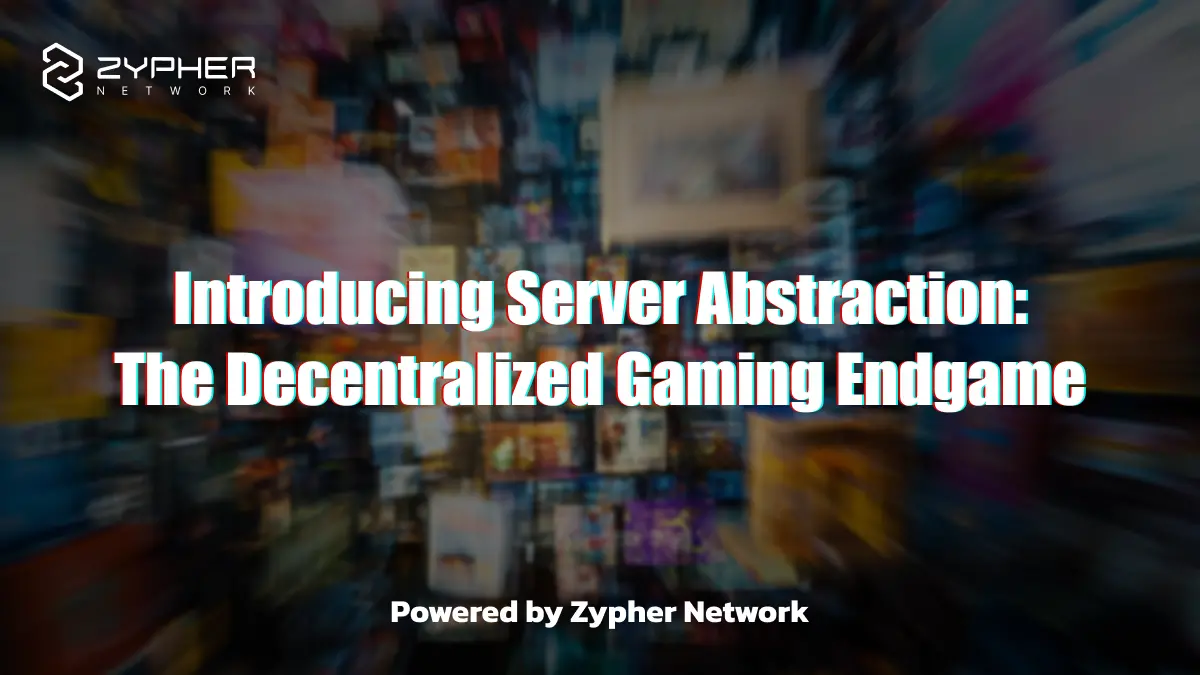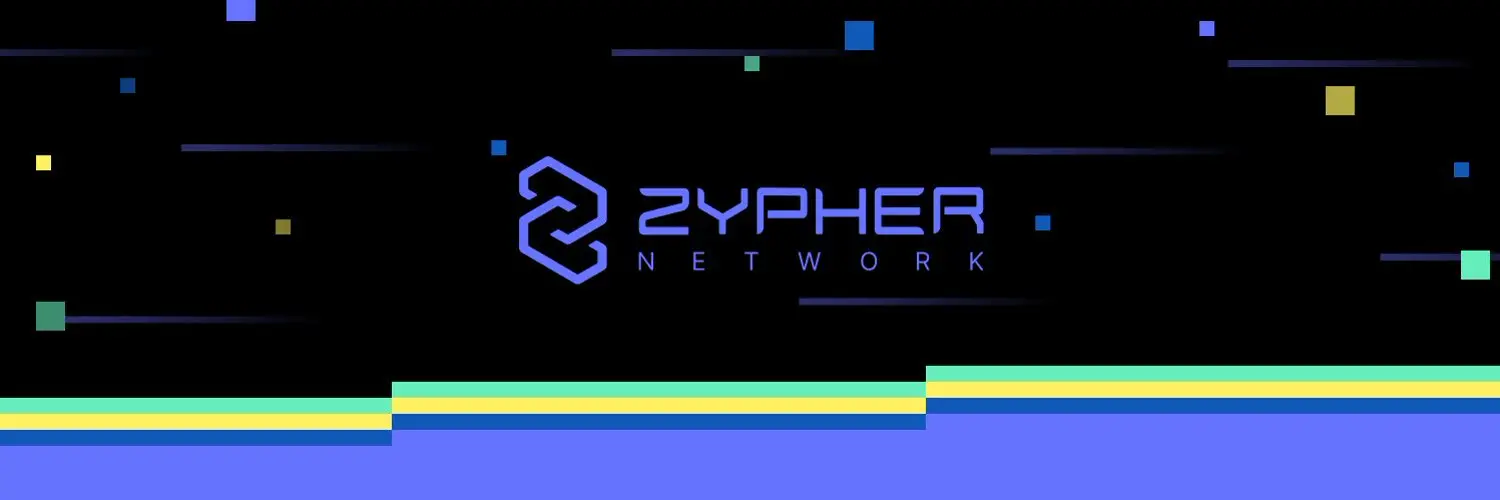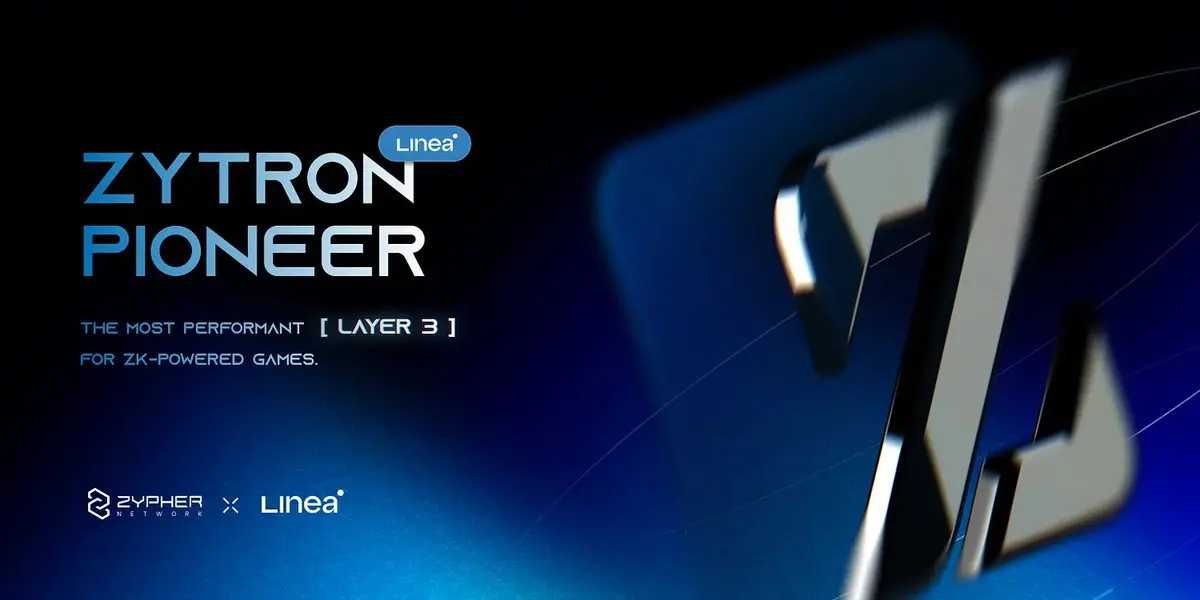
Following the concepts of chain abstraction and account abstraction, Zypher Network has further proposed the concept of server abstraction and has launched a server abstraction solution for the Web3 gaming sector based on zk technology. With this solution, game developers can create and run games in a completely decentralized environment without relying on traditional centralized server architectures. The game world can operate across multiple distributed nodes and possesses the ability for autonomous dynamic sharding and efficient data synchronization.
The new narrative of server abstraction may be the optimal solution for the operation of Web3 games, making gameplay more efficient, secure, and trustworthy. It is also expected to become a key driver for a new round of growth in the GameFi sector.
The Web2.5 Moment of Blockchain Games
Blockchain games are inherently branded as Web3, retaining traditional gameplay while introducing token economic elements such as Crypto, NFTs, and P2E features, which assetize game content and give players ownership of assets. However, the vast majority of blockchain infrastructures do not possess the conditions to support the operation of game logic. For instance, let's assume that each player in a game generates one on-chain transaction per second (such as moving, skill activation, etc.), and we assume there are 10,000 active players participating in the game at the same time. The underlying blockchain would need to achieve at least 10,000 TPS to support these players playing smoothly; otherwise, the game would be extremely laggy, and gas fees would be exorbitantly high (one can look at the gas fee situations on various chains during the inscription period). Currently, there seems to be no blockchain that has been practically verified to meet these requirements.
Therefore, to ensure a high-quality gaming experience, especially for real-time online games, the game logic is usually run on off-chain servers (where storage, computation, etc., occur off-chain). This provides a gameplay experience similar to that of Web2 games. However, continuous data synchronization between on-chain and off-chain is necessary to ensure that the states among players remain consistent.
For example, when I purchase a sword in the game, the off-chain database needs to synchronize this on-chain transaction data in real-time to increase the number of weapons in my inventory, allowing me to use it whenever needed. This process of on-chain and off-chain data synchronization is ongoing and involves a massive workload.
In fact, this Web2.5 approach must bear a series of issues brought about by centralized servers, including censorship, hacking attacks leading to single points of failure in games, and scalability issues. Of course, the need for continuous synchronization of on-chain and off-chain data may also lead to problems such as data hijacking, data leaks, and cheating due to malicious actions by game developers, especially when economic interests are involved, making it difficult to ensure that the executors do not act maliciously, as there is no mechanism to limit wrongdoing.
Another potential issue is that the token economy is on-chain while the game logic is off-chain, and the two are usually parallel. The logic of the game and player interactions are often very complex, involving a large number of real-time decisions, state changes, and randomness, making it difficult to encapsulate the game logic entirely within smart contracts. For instance, items, character skills, and event triggers in the game are usually dynamic and difficult to fully represent through static code, so developers need to frequently adjust strategies to align with the game.
The Development Dilemma of Blockchain Games
Thus, when on-chain computing power is limited, transaction costs are high, and real-time requirements are stringent, Web2.5 games often struggle to implement more complex game logic. This has led to many Web3 games lacking in quality and struggling to achieve profitability through the game content itself. In this context, developers often bet their revenue on token economies and NFT sales, while some resourceful teams rely on financing support. However, games relying solely on token appreciation and P2E incentives often find it difficult to maintain daily active users, as seen in typical projects like Axie Infinity and Star Atlas.
On the other hand, we see many Web3 development teams currently claiming to develop blockchain AAA games, which may not be realistic.
AAA games have extremely long development cycles. Whether it is "Black Myth: Wukong," which features an immersive gaming experience and captivating cultural background (with global sales exceeding 18.1 million copies), or "Starfall," which was launched by Sony and had a peak daily active user count of only around 700 on Steam within half a month of its market release, both have undergone eight years of development. The enormous investment and time commitment make it a pipe dream to expect returns from the crypto market. Especially for Web2 AAA development teams with mature business models, they may be even less willing to disrupt their business models by entering the Web3 space and adding unnecessary burdens.
Similarly, facing complex game logic and elements, existing infrastructure is unable to provide adequate support, which is one of the fundamental reasons.
Therefore, whether in terms of technology, investment, timelines, or existing industry resources (including infrastructure), it is challenging to provide support, especially given the rapid changes in the crypto market.
We observe that the on-chain gaming sector, which has not seen significant paradigm shifts, struggles to overcome user attrition and has almost no new users, remaining in a prolonged downturn.
Fundamentally changing the operational logic of existing games to more reasonably break free from Web2.5 and transition to Web3 may be key to addressing the development and growth issues currently faced by blockchain games, and the server abstraction narrative proposed by Zypher Network may be the optimal solution.
Server Abstraction Narrative
First, let's discuss server abstraction.
Chain abstraction and account abstraction have previously been highly discussed narratives in the industry, both aimed at lowering the barriers for users to utilize on-chain facilities by folding in cryptographic native designs. For example, account abstraction allows for customizable account behaviors, enabling accounts to execute complex smart contract logic. It simplifies user experience and supports flexible designs for various authentication and transaction methods. For instance, based on account abstraction features, when I generate a wallet account, I can use familiar characteristics (like an email or even a fingerprint) to replace a mnemonic phrase, or implement gas payment through the abstraction layer, etc. Chain abstraction, on the other hand, separates applications from the underlying implementation of specific blockchains, allowing developers to deploy applications across different blockchains without worrying about the underlying network details, thus enhancing cross-chain interoperability and development flexibility. With chain abstraction facilities, developers can seamlessly integrate multiple chains, and users can effortlessly conduct cross-chain transactions.
Essentially, both account abstraction and chain abstraction achieve different behavioral directions and functional expansions by establishing different execution layers or structures. Different projects have varying solutions for implementing chain abstraction and account abstraction.
Zypher Network extends the concepts of account abstraction and chain abstraction, further proposing the concept of server abstraction.
Server abstraction resembles a serverless state, aiming to establish a new distributed resource service layer in a decentralized manner, reducing or hiding the complexity of underlying server infrastructure, ensuring that users and developers can transparently and efficiently access the required services without directly managing or interacting with physical or cloud servers. Server abstraction can directly meet the computational and storage resource needs of decentralized applications (dApps) or blockchain projects without relying on centralized servers.
As the underlying engine in the blockchain gaming sector, Zypher Network is the first to apply the server abstraction narrative in the blockchain gaming field.

Zypher Network's Server Abstraction Solution
Zypher Network itself is a set of Web3 game engine infrastructure based on zero-knowledge proof solutions. It not only provides developers with multifunctional tools based on zero-knowledge proofs (ZKP), lowering the barriers for developers to use ZKP and other technologies to develop Web3 games, but also, after the game development is completed, Zypher Network serves as a distributed game engine system, providing a powerful and flexible infrastructure for the decentralized operation of games, meeting various technical needs and enhancing the gaming experience, while further embedding necessary functions as needed.
Zypher Network does not deploy game logic on centralized servers; instead, it writes game logic directly into on-chain circuits, while the work of generating proofs based on ZKP occurs off-chain, with the final verification of proofs returning to the chain.
The generation of proofs is driven by its off-chain distributed verification node network layer, where each node possesses the capability to generate zero-knowledge proofs and communicate, providing strong computational support for the game. This network is driven by token economics. We see that both the on-chain and off-chain components jointly support the operation of the game, fulfilling the role of a server, but both parts operate in a decentralized manner. Therefore, there are no actual specific server facilities in this system; we can understand it as abstracting the server while achieving better results than traditional servers.
Operational Logic
- Off-Chain Component
When the game is running, nodes in the Zypher Network engine aggregate the action logs generated by players' continuous gameplay into ZK proofs. Within a certain period, these game actions (each being a transaction) are aggregated into a single ZKP proof, and multiple proofs are submitted to the chain in a single transaction. This method not only significantly reduces gas fees but also ensures a lag-free gaming experience for some PvE game deployments.
For some PvP scenarios, Zypher Network further launched the Z4 engine based on the aforementioned node network, providing a foundation for real-time multiplayer online gaming. The Z4 engine supports players to enter game rooms through matching, where the room itself is stateless, and nodes do not store data, greatly enhancing the engine's scalability, fault tolerance, security, and responsiveness, facilitating the distribution of computational tasks across multiple nodes without worrying about data synchronization issues, thus improving overall performance and efficiency.
In the game rooms of the Z4 engine, players' actions are also packaged and sorted in ZKP format, uploaded to the chain for verification, and executed for results. Notably, Z4 nodes support the use of virtual machines (wasm/evm/…) to run game logic, allowing smart contracts, economic models, and game logic to be built together in a composable manner. Furthermore, if higher efficiency is required, developers can write game logic directly within the nodes without using a virtual machine, meaning the gaming process will not involve transactions or gas fees, significantly reducing development costs for developers and gaming costs for players, while greatly enhancing the operational efficiency and load capacity of online games.
Once nodes complete the aforementioned series of tasks, they can receive incentives from the network. Of course, nodes also need to stake some tokens to increase the cost of malicious actions, as wrongdoing will incur penalties.
- On-Chain Component
The on-chain component of Zypher Network has launched a modular Layer 3 system (Zytron Engine) dedicated to the gaming ecosystem, supporting developers in building their own APP Chains in a modular way. By providing a series of plug-and-play tool components, developers can construct autonomous worlds, small strategy games, or migrate AAA games onto the chain at minimal cost and without a steep learning curve, while retaining production-level Unreal Engine capabilities. This also allows the complex computational processes corresponding to game logic to be offloaded to off-chain nodes. Based on Layer 3, off-chain nodes can automatically scale according to load, further ensuring efficient game operation and a seamless user experience.
From the perspective of validating off-chain proofs, on one hand, the Zytron Engine itself is customized and modularly deployed in a Layer 3 manner, achieving a 0 Gas design through a series of technical optimizations, while also having some pre-compiled contracts on-chain, which provides extremely high verification efficiency compared to the vast majority of chains. On the other hand, the Zytron Engine is also integrated with EigenLayer, deploying an AVS computation layer on EigenLayer, which similarly achieves highly efficient and secure verification while ensuring decentralization. For different gaming solutions, customizable verification methods that better match specific game scenarios can be selected, ensuring more efficient overall game operation.
In addition, the Zytron Engine has integrated Celestia as the default data availability (DA) option, further reducing the data burden on the on-chain system.
In summary, all designs aim to ensure a more efficient and decentralized operation of the system or game.
It is worth mentioning that Zypher Network has currently launched the first Layer 3 mainnet designed specifically for game developers on Linea, marking a new milestone in the technical progress of the ecosystem.

Transitioning from Web2.5 to Web3
The shortcomings of Web2.5 are mainly reflected in security, trustworthiness, and efficiency. Additionally, its difficulty in implementing complex game logic leads to low quality in on-chain games, causing developers' and players' attention to focus primarily on the economic ecosystem.
The advantages of Zypher Network's server abstraction solution are quite evident, as it can provide support for game operation in a parallelized manner through a distributed node network, without the need for constant synchronization of on-chain and off-chain data. This system also possesses a high degree of scalability that traditional centralized servers lack, while eliminating single point risks, and the entire operational process is trustworthy.
On the other hand, within this system, due to its unique architectural design and modular integration with external systems, the chain does not bear excessive pressure from the computations and verification processes involved in game logic. Moreover, its unique architectural design supports localized programming and is compatible with various EVMs, meaning that economic models, smart contracts, and game logic are no longer parallel; they can achieve dynamic combinations.
With Zypher Network, the Web3 gaming sector will no longer be limited to small and medium-sized games; large games with complex content and game logic, including AAA games, can also be transitioned to Web3 and continuously receive high levels of support in operation. Blockchain games can win with high-quality gameplay, and developers can capture larger markets through the games themselves, rather than solely relying on FOMO economic models and the value and appreciation of tokens.
In fact, if Web3 games can provide an experience equal to or even better than Web2 games, I believe that with the support of features like P2E and asset ownership, Web3 games will possess greater attractiveness and influence, allowing them to reach broader markets and continuously welcome new growth points.
The server abstraction narrative is expected to be key in maintaining the vitality of the GameFi sector and advancing to the next stage, and it is likely to become the mainstream architecture for future Web3 applications, with Zypher Network emerging as a pioneer in the server abstraction narrative.
免责声明:本文章仅代表作者个人观点,不代表本平台的立场和观点。本文章仅供信息分享,不构成对任何人的任何投资建议。用户与作者之间的任何争议,与本平台无关。如网页中刊载的文章或图片涉及侵权,请提供相关的权利证明和身份证明发送邮件到support@aicoin.com,本平台相关工作人员将会进行核查。




